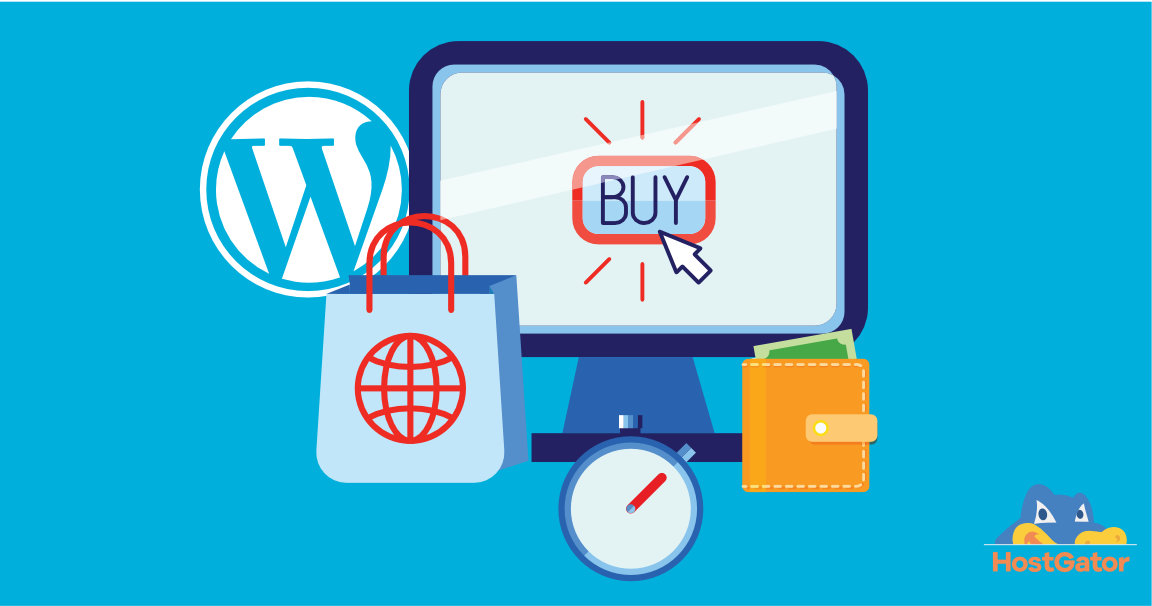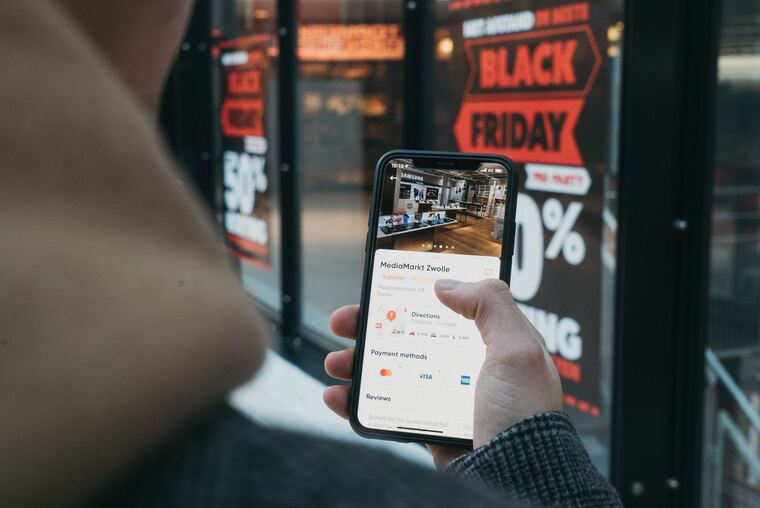Welcome to the exciting world of online retail! Building an online store is a fantastic opportunity to showcase your products or services to customers around the globe. With the ever-growing popularity of e-commerce, now is the perfect time to dive into this digital marketplace.
But before you start envisioning dollar signs and success stories, it's important to understand what goes into building a successful online store. From costs and timelines to choosing the right technologies and marketing strategies, there are several factors that can make or break your venture.
We will guide you through the process of creating an online store from scratch. Whether you're a seasoned entrepreneur or just starting out, we'll provide valuable insights on everything from budgeting and design to user experience and maintaining customer loyalty.
So grab a cup of coffee and get ready for an enlightening journey into the world of e-commerce. Let's explore how you can build best online store builder not just any online store, but one that stands out in today's competitive market.













Costs to Consider When Building an Online Store
When it comes to building an online store, there are several costs that need to be taken into consideration. These costs can vary depending on the size and complexity of your store, as well as the specific features and functionalities you want to include. One of the main costs is website development. This includes designing and coding your online store, integrating payment gateways, setting up a secure checkout process, and ensuring that your website is mobile-friendly. Hiring a professional web developer or using an e-commerce platform like Shopify or WooCommerce can help streamline this process. Another cost to consider is hosting and domain fees. You will need a reliable hosting provider to ensure that your website is accessible at all times. Additionally, registering a domain name for your online store will give it a unique identity on the internet. Marketing expenses should also be factored in when budgeting for an online store. This includes running digital advertising campaigns, implementing search engine optimization (SEO) strategies, creating content marketing materials such as blog posts or product videos, and engaging with customers through social media channels. Inventory management is another important cost consideration for online stores selling physical products. It's crucial to invest in inventory tracking software or systems that allow you to manage stock levels accurately and efficiently. Don't forget about customer support expenses. Providing exceptional customer service is essential for maintaining customer satisfaction and loyalty. Investing in tools like live chat software or hiring dedicated support staff can help ensure prompt responses to customer inquiries. Building an online store involves various costs beyond just setting up the website itself.
How much does it cost to build an online store?
The cost of building an online store can vary widely depending on various factors such as the complexity of the online store built upon, features, design, development platform, and the development team's rates. Here are some key cost considerations:- E-commerce Platform:
- Using a pre-built e-commerce platform like Shopify, WooCommerce (for WordPress), or Magento can be cost-effective. These platforms often have monthly subscription fees, and some may charge transaction fees.
- Custom Development:
- If you need a highly customized solution, you might opt for custom development. This can be more expensive but allows for greater flexibility in design and functionality. Custom development costs can vary significantly based on the complexity of your requirements.
- Design:
- The design of your online store is crucial for a positive user experience. Design costs can vary based on whether you choose a pre-made theme or opt for a custom design. Custom designs generally cost more.
- Domain Name and Hosting:
- You'll need to purchase a domain name and pay for hosting services. Hosting costs can vary based on the provider and the type of hosting plan you choose.
- Payment Processing:
- There are fees associated with payment processing. This includes transaction fees charged by payment gateways and, if applicable, a merchant account for credit card processing.
- SSL Certificate:
- Security is crucial for e-commerce. You'll need an SSL certificate to secure online transactions. Costs for SSL certificates vary.
- Content Management System (CMS):
- If you're using a CMS like WordPress, there may be costs associated with premium plugins or extensions that add specific e-commerce features.
- Marketing and SEO:
- Budget for marketing and search engine optimization (SEO) efforts to drive traffic to your online store. This may include costs for online advertising, content creation, and SEO services.
- Maintenance and Updates:
- Consider ongoing maintenance costs for keeping your online store up-to-date, secure, and functional. This may include software updates, security patches, and regular backups.
- Legal and Regulatory Compliance:
- Ensure compliance with legal and regulatory requirements, which may include costs for privacy policies, terms of service, and any necessary legal advice.

How is Profitable Online Store
The profitability of an online store can vary widely based on numerous factors, including the industry, business model, target market, marketing strategies, and overall management. Here are some key considerations:- Industry and Niche:
- The profitability of an online store can be influenced by the industry and niche it operates in. Some industries may be more competitive, while others might have higher profit margins.
- Product Margins:
- The margin between the cost of goods and the selling price directly impacts profitability. Higher-margin products generally contribute to more significant profits.
- Market Demand:
- The demand for the products or services offered by the online store plays a crucial role. A high-demand product or niche can lead to more sales and increased profitability.
- Customer Acquisition Costs (CAC):
- Understanding the cost of acquiring each customer is essential. If the cost of marketing and acquiring customers is too high, it can affect overall profitability.
- Conversion Rates:
- The percentage of website visitors who make a purchase (conversion rate) is critical. Improving conversion rates can lead to increased sales and profitability.
- Operational Costs:
- Managing operational costs, including inventory, fulfillment, customer service, and technology, is crucial. Efficient operations contribute to higher profitability.
- Marketing Strategies:
- Effective marketing strategies can significantly impact sales and profitability. This includes online advertising, content marketing, social media marketing, and search engine optimization (SEO).
- Customer Retention:
- Repeat customers often contribute more to profitability than acquiring new customers. Building customer loyalty and encouraging repeat business is essential.
- Economic Factors:
- Economic conditions can influence consumer spending habits. A strong economy may lead to increased consumer confidence and spending, positively impacting online store profitability.
- Competitive Landscape:
- The level of competition in the market can affect pricing strategies and profit margins. A unique value proposition or differentiation can help a store stand out.
- Adaptability and Innovation:
- Being adaptable to market trends and leveraging innovative approaches can positively impact profitability. Staying up-to-date with technology and consumer preferences is crucial.

Do You Need Money to Start an Online Store?
While it is possible to start an online store with minimal funds, there are some essential costs you may need to consider. The exact amount can vary depending on various factors, including the scale of your business, the type of products you sell, and the platform you choose. Here are some potential costs associated with starting an online store:- Domain Name: Purchasing a domain name for your online store typically involves an annual fee. Prices can vary depending on the domain registrar and the chosen domain extension.
- Web Hosting: If you're using a self-hosted platform, you'll need to pay for web hosting. Some website builders include hosting in their plans, while others may require separate hosting fees.
- E-commerce Platform Fees: Many e-commerce platforms, especially hosted ones like Shopify and BigCommerce, have monthly subscription fees. These fees often depend on the features and level of support provided by the platform.
- Payment Processing Fees: When you accept online payments, payment gateways usually charge transaction fees. This fee is a percentage of each transaction and can vary depending on the payment method.
- SSL Certificate: To ensure secure transactions, you'll need to invest in an SSL certificate. Some hosting providers offer free SSL certificates, while others may charge an additional fee.
- Website Design: While many e-commerce platforms offer free or inexpensive themes, you might choose to invest in a premium theme or hire a designer for a more customized look.
- Product Photography: High-quality product images are crucial for online stores. You may need to invest in professional photography equipment or hire a photographer to showcase your products effectively.
- Marketing and Advertising: To promote your online store and attract customers, you might need to allocate funds for marketing and advertising. This could include social media ads, search engine marketing, or other promotional efforts.
- Legal and Compliance Costs: Creating legal documents such as Terms of Service, Privacy Policy, and Refund Policy may require legal assistance. Some businesses may also need licenses or permits, incurring additional costs.
- Inventory: If you're selling physical products, you'll need to budget for initial inventory costs. Consider dropshipping as an option to minimize upfront inventory expenses.

Can You Build an Online Store for Free?
Building an online store typically involves various costs, and it's challenging to create a fully functional and secure e-commerce website entirely for free. However, there are some platforms and tools that offer free plans or open-source solutions that you can use to build a basic online store without upfront costs. Here are a few options:- Open-Source Platforms:
- Platforms like WooCommerce (for WordPress), Magento, and PrestaShop are open-source e-commerce solutions. While the software itself is free, you'll still need to pay for hosting, a domain name, and potentially some additional features or extensions.
- Free E-commerce Platforms:
- Some e-commerce platforms offer free plans with limited features. For example, platforms like Shopify, Big Cartel, and Ecwid provide free plans, but they often come with restrictions on the number of products you can list or transactions you can process.
- Free Website Builders:
- Website builders like Wix, Weebly, and WordPress offer free plans that you can use to create a basic online store. However, these plans may include the platform's branding, and you might need to upgrade to a paid plan for a custom domain and additional features.

Timelines for Building an Online Store
Building an online store is an exciting endeavor, but it's important to have realistic expectations when it comes to timelines. The time it takes to build an online store can vary depending on several factors. First and foremost, the complexity of your online store will play a significant role in determining how long it will take to build. If you're starting from scratch and need custom features or integrations, this could extend the timeline considerably. Your team size and availability will impact the timeline. If you have a dedicated team working full-time on building the online store, you can expect faster progress compared to if you're relying on limited resources or outsourcing certain tasks. Another factor that may influence the timeline is your familiarity with ecommerce platforms and technologies. If you're already experienced with building websites or have prior knowledge of ecommerce platforms like Shopify or WooCommerce, this could expedite the process. Any additional requirements such as payment gateway setup, inventory management system integration, or implementing specific design elements can also affect timelines. It's essential to plan ahead and set realistic deadlines based on these factors. Communicating clearly with your development team about desired launch dates can help ensure everyone is aligned and working towards a common goal. While there isn't a one-size-fits-all answer for how long it takes to build an online store since every project is unique; taking into account these considerations will give you a better understanding of what to expect in terms of timelines. Remember that patience and careful planning are key ingredients for success in building your dream online store!
Choosing the Right Technologies for Your Online Store
Choosing the right technologies for your online store is crucial to its success. With so many options available, it can be overwhelming to decide which ones are best suited for your business. Here are some factors to consider when making this decision. Consider the scalability of the technology. As your online store grows, you will need a platform that can handle increasing traffic and sales. Look for technologies that offer flexibility and can easily accommodate future growth. Think about integration capabilities. Your online store should seamlessly integrate with other systems such as inventory management, payment gateways, and customer relationship management (CRM) tools. This will ensure smooth operations and enhance efficiency. Security is another important factor to consider when choosing technologies for your online store. Customers need to feel confident in providing their personal information and making transactions on your website. Look for platforms that have built-in security features such as SSL certificates and secure payment gateways. User experience is paramount in an online store's success; therefore, choose technologies that prioritize usability and provide a seamless shopping experience across different devices. Mobile responsiveness is key since more people are now using smartphones or tablets to shop online. Consider the cost of implementing these technologies into your online store infrastructure. While it's important not to compromise on quality, make sure you select solutions within your budget constraints.

What is the best site to start an online store?
The "best" site to start an online store depends on your specific needs, preferences, and the scale of your business. Here are some popular e-commerce platforms that cater to different requirements:- Shopify:
- Pros: User-friendly, great for beginners, a wide range of themes and apps, reliable hosting, and excellent customer support.
- Cons: Transaction fees for certain plans.
- WooCommerce (for WordPress):
- Pros: Integrates seamlessly with WordPress, customizable, extensive plugin library, and no monthly fees (though you need to pay for hosting).
- Cons: Requires a WordPress website, which adds an extra layer of complexity for beginners.
- BigCommerce:
- Pros: Robust features, scalable, good for large or fast-growing businesses, no transaction fees, and includes hosting.
- Cons: Pricing may be higher for smaller businesses.
- Wix:
- Pros: Drag-and-drop website builder, visually appealing templates, good for small businesses, and a free plan available.
- Cons: Limited flexibility compared to some other platforms.
- Magento:
- Pros: Open-source and highly customizable, suitable for large businesses with complex needs.
- Cons: Requires technical knowledge, hosting costs, and may be overkill for small businesses.
- Squarespace:
- Pros: Beautiful templates, all-in-one solution, easy to use, and includes hosting.
- Cons: Limited third-party app ecosystem compared to some other platforms.
- Ecwid:
- Pros: Easily integrates with existing websites (including social media), free plan available, and no transaction fees.
- Cons: Limited features on the free plan, might require additional plugins for advanced functionality.
- PrestaShop:
- Pros: Open-source, customizable, and suitable for medium to large businesses.
- Cons: Requires technical knowledge, and hosting costs are additional.

How to Design Online Retail Store?
Designing an online retail store involves several key steps to ensure a user-friendly, visually appealing, and functional website. Here's a general guide to help you design your online retail store:1. Define Your Brand and Target Audience:
- Clearly define your brand identity, including your logo, color scheme, and overall style. Understand your target audience and tailor your design to appeal to their preferences.
2. Choose the Right E-commerce Platform:
- Select an e-commerce platform that suits your needs. Popular options include Shopify, WooCommerce (for WordPress), BigCommerce, and Magento. Each platform has its own set of features and customization options.
3. Responsive Design:
- Ensure your website design is responsive, meaning it adapts seamlessly to different screen sizes, including desktops, tablets, and smartphones. This is crucial for providing a good user experience.
4. User-Friendly Navigation:
- Create an intuitive navigation structure. Use clear and logical categories and subcategories for products. Implement a user-friendly menu and provide a search function to help users find what they're looking for quickly.
5. Clear Product Displays:
- Display high-quality images of your products from various angles. Include detailed product descriptions, specifications, and pricing information. Implement a clear call-to-action (CTA) for each product, such as "Add to Cart."
6. Streamlined Checkout Process:
- Simplify the checkout process to minimize friction. Implement a one-page checkout if possible. Include multiple payment options and secure payment gateways. Clearly display shipping costs and delivery times.
7. Security Measures:
- Prioritize the security of your online store. Use HTTPS, implement SSL certificates, and ensure that customer data is protected. Display trust badges to instill confidence in your customers.
8. Mobile Optimization:
- Optimize your website for mobile devices. A significant portion of online shopping occurs on smartphones, so it's essential to provide a seamless experience for mobile users.
9. Branding Consistency:
- Maintain consistency in branding across your ecommerce site. Use consistent fonts, colors, and imagery to reinforce your brand identity.

Importance of User Experience and Design in a Successful Online Store
When it comes to building a ecommerce store, user experience (UX) and design play a crucial role. In fact, they can make or break your business. Why is this so important? Well, think about it - when customers visit your online store, their first impression will be based on the overall look and feel of your website. A well-designed and intuitive interface not only captures attention but also keeps visitors engaged. It helps them easily navigate through different sections of your store, find what they are looking for quickly, and complete their purchase without any hassle. Choosing the right technologies is crucial to provide a seamless shopping experience for your customers. Consider factors such as platform scalability, mobile responsiveness, integration capabilities with other business tools like CRM software or email marketing platforms when selecting an e-commerce solution. User experience and design play a pivotal role in driving conversions on your online store. A visually appealing layout coupled with intuitive navigation enhances user satisfaction while browsing through products. Ensure that your site loads quickly across all devices and optimize for easy checkout processes to minimize cart abandonment rates. Marketing strategies are vital for attracting customers to your product pages or online store. Utilize SEO techniques to improve search engine rankings organically while running targeted paid advertising campaigns across various channels like social media platforms or Google Ads.
